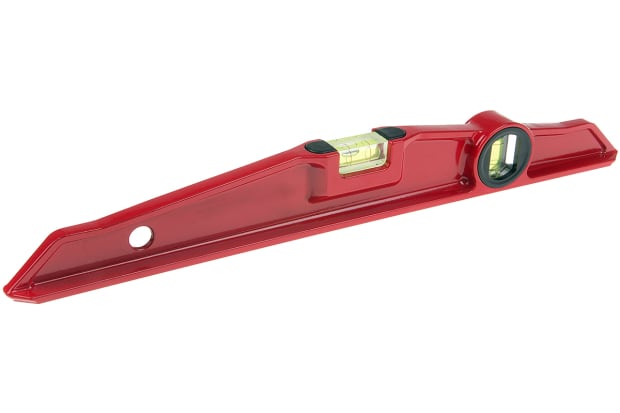- Published 3 Jul 2023
- Last Modified 29 Aug 2023
- 6 min
What is a Spirit Level?
Discover the intricacies of spirit levels in this comprehensive guide, covering their history, functionality, usage, and different types.

Spirit levels are used to determine if a surface is vertical (plumb) or horizontal (level). They get their name from the liquid spirit encased in the level’s vial. The spirit is typically alcohol or another low-freezing-point liquid that creates an air bubble, whose position indicates a surface's levelness or plumbness.
What is a Spirit Level Used for?
From builders and carpenters to plumbers and masons, many industries use spirit levels. They are crucial in the construction industry to ensure accuracy and precision in tasks such as erecting walls, hanging doors, laying floor tiles, or fitting countertops. However, spirit levels are not limited to the building trade. For instance, they are also used in photography to guarantee straight shots and in surveying to achieve accurate measurements.
How to Use a Spirit Level

To effectively use a spirit level, place the tool on the surface you're levelling. Adjust the surface until the bubble inside the vial aligns between the two guideline marks. For vertical testing, the same principle applies.
To understand how to calibrate a spirit level, adjust the level on a flat surface and mark the bubble position. Rotate the level 180 degrees and compare the bubble's position. If it differs, you will need to adjust the vial, typically by turning a screw, until the bubble positions match.
Who Invented the Spirit Level?
The spirit level was invented by Melchisédech Thévenot, a French scientist and avid traveller in the 17th century. His version, known as the inclinometer, was perfected over time into the practical tool professionals across the globe use today.
Why is it Called a Spirit Level?
The term spirit refers to the liquid contained within the vial of the level. The spirit is usually a type of alcohol due to its clean, bubble-forming characteristics and resistance to freezing.
What is the Best Spirit Level?
When considering the best spirit level, you need to assess the task at hand. If you’re looking for an all-around, professional tool, levels from brands such as Stabila, Stanley, and Bahco are popular, offering durability, precision, and a range of sizes. We also have our own range of top-quality spirit levels from RS PRO, our in-house brand.
Different Types of Spirit Level
Several types of spirit levels cater to varying professional needs:
- Box Levels - Known for their robustness, they’re ideally suited to heavy-duty work
- I-Beam Levels - Lightweight and cost-effective, ideal for light-duty tasks
- Torpedo Levels - Compact and practical for tight spaces and quick checks
- Digital Levels - Provide electronic readings, suitable for precision tasks
- Cross Test Levels - Designed to indicate levelness on two planes simultaneously
- Magnetic Levels - Equipped with magnetic edges, they can adhere to metal surfaces, freeing up your hands for other tasks. This makes them particularly handy when working with metal frames, pipework, or conduits
Remember, the size of your spirit level is also significant as it must be appropriate for the task. For example, if you’re aligning a door frame, you may require a larger spirit level than in other applications.
What Liquid is in a Spirit Level?
The liquid in a spirit level vial, often called the spirit, is typically a form of alcohol. It’s used because of its low freezing point, meaning the level can be used in a variety of climates. In addition, it has clarity and the ability to form a bubble. The spirit is usually coloured for visibility.
FAQs
Summary
To summarise, a spirit level is a versatile, essential tool across multiple industries, from construction to photography. The tool operates on a simple principle where the position of a bubble within a liquid-filled vial indicates the levelness or plumbness of a surface. Its invention is attributed to the French scientist Melchisédech Thévenot, and its name originates from the spirit used within the vial.
Using a spirit level involves aligning the bubble within the guideline marks. Calibration, on the other hand, is a process of adjusting the vial for accuracy. The spirit level you choose depends on the task, considering factors like robustness, size, and precision.
The type of spirit level suitable for you varies according to your professional requirements. The choice ranges from durable box levels to compact torpedo levels and precise electronic levels. Regardless of the type or brand you choose, always remember to handle and store your spirit level with care to maintain its accuracy.
In a world where precision is paramount, the humble spirit level proves irreplaceable. Armed with this guide, you can confidently select the best spirit level that matches your requirements.


